Nexus 7 (2013) - Mini Review
by Brian Klug on July 27, 2013 12:54 AM EST- Posted in
- Tablets
- Snapdragon
- Qualcomm
- Android
- Mobile
- APQ8064
- Nexus 7
- Android 4.3
Last year the Nexus 7 debuted with a Tegra 3 SoC, which for reminder consisted of a 4+1 architecture of ARM Cortex A9 CPUs, with the 4 A9s built on 40nm G, and the +1 “shadow core” A9 built on 40nm LP (TSMC’s 40 LPG process), accompanied by ULP GeForce GPU with 12 cores running at a max GPU clock of 416 MHz. The exact SoC was NVIDIA’s Tegra 3 T30L, which could run one A9 at up to 1.3 GHz and all A9s at up to 1.2 GHz.
Rather than the relatively logical upgrade path of going to NVIDIA’s Tegra 4 SoC (I’ve heard all manner of speculation about what happened there), the new Nexus 7 switches to Qualcomm’s APQ8064–1AA, a version with 4 Krait 300 CPU cores (yes, Krait 300, not 200) running at up to 1.5 GHz and Adreno 320 graphics. Rather than use a PoP and LPDDR2, this specific APQ8064 variant goes to PCDDR3L–1600 MHz instead, including 4, 4Gb discrete 1.35V SK-hynix DRAM devices off to the side (more on the opposite side of the PCB) adding up to 2 GB of RAM. Qualcomm's Snapdragon S4 Pro and Snapdragon 600 branding gets confused here, although Qualcomm is calling the APQ8064 inside the Nexus 7 (2013) S4 Pro, it's more like an underclocked or lower binned Snapdragon 600.
At this point APQ8064 is probably the most well understood SoC in recent memory (so much so that I’m pining for devices to include something different just from an academic perspective) so I’ll spare the very verbal discussion about its performance.
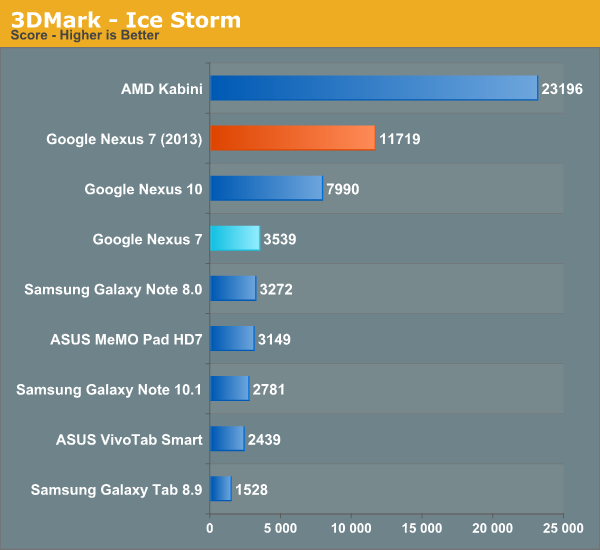



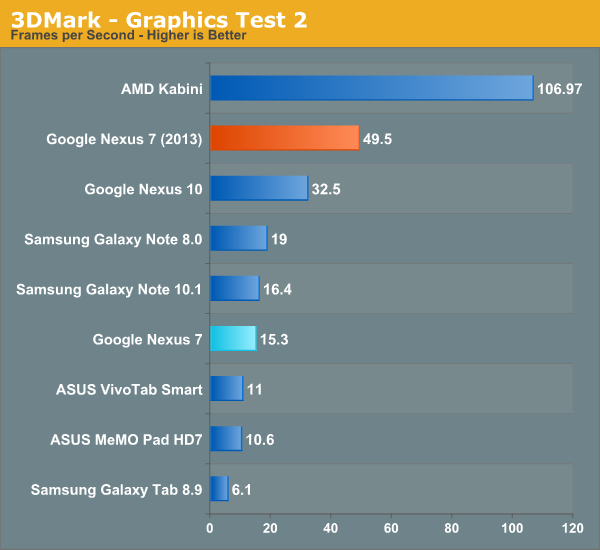
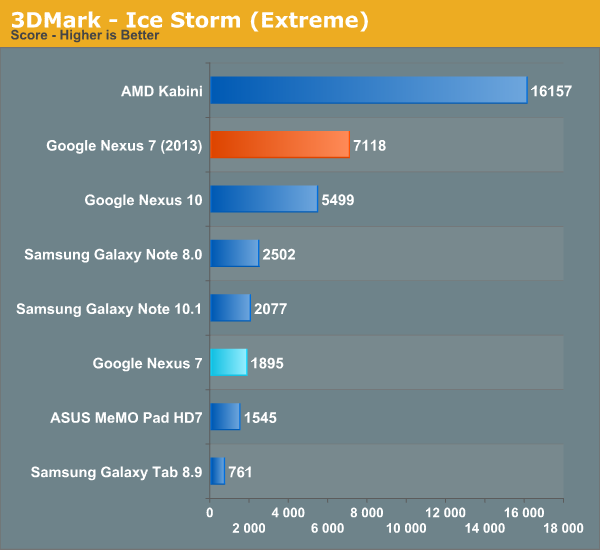

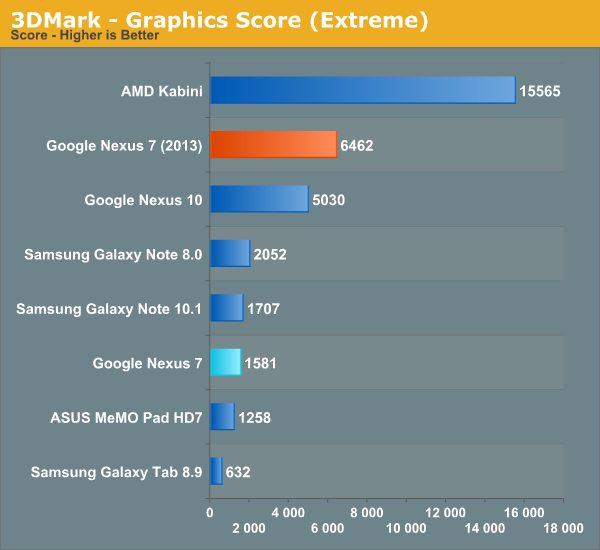

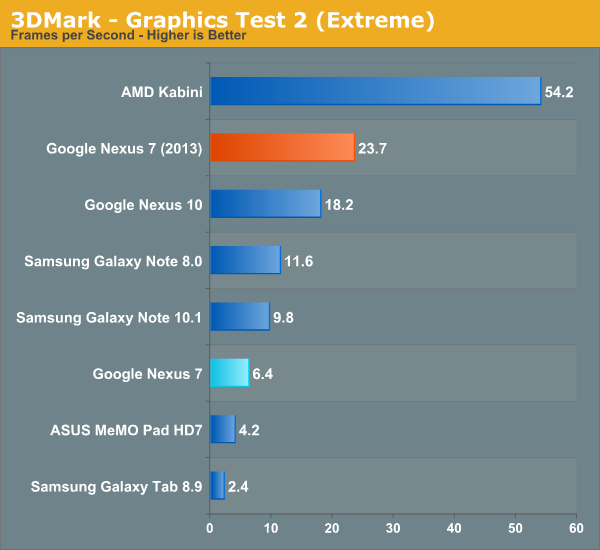


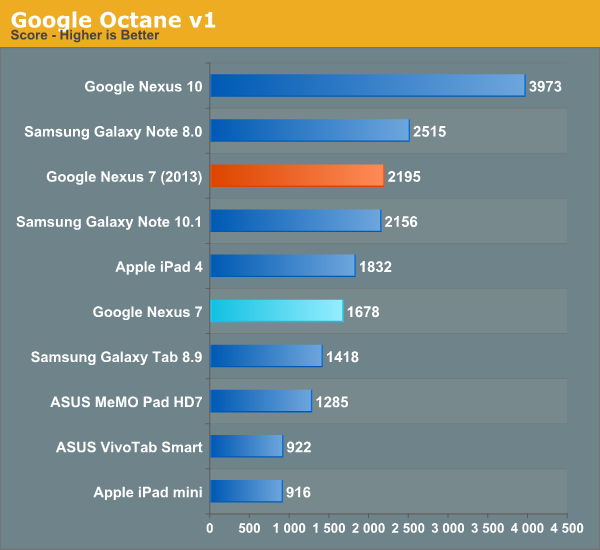
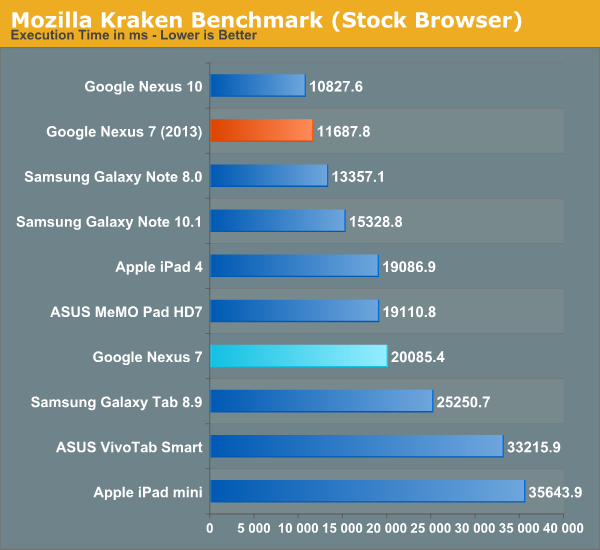
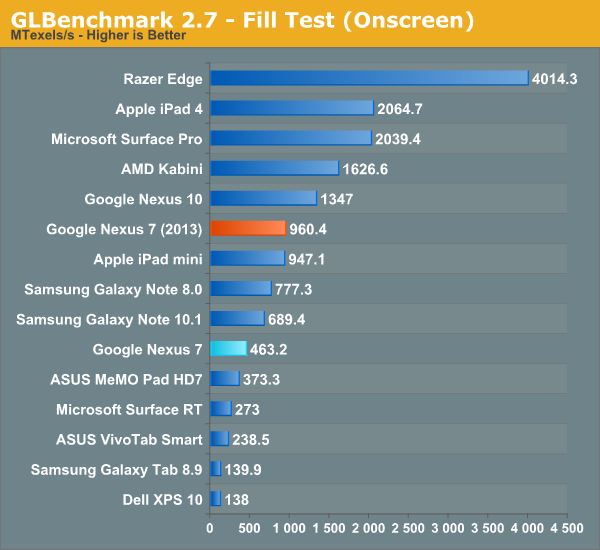
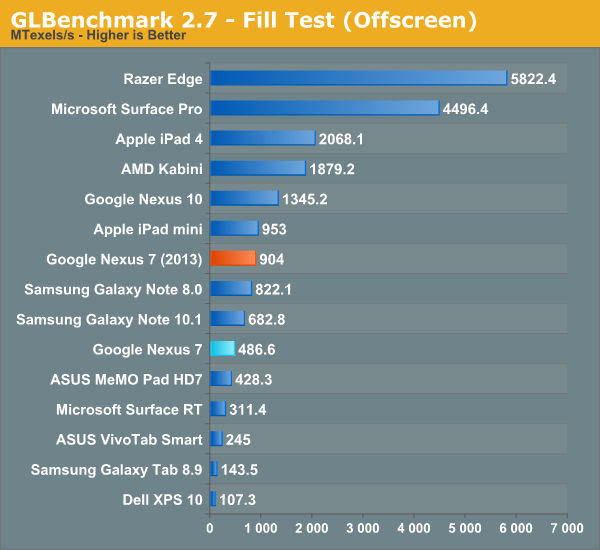
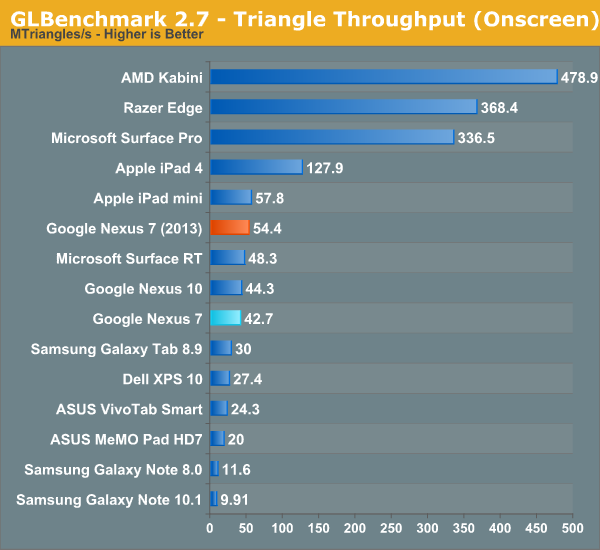
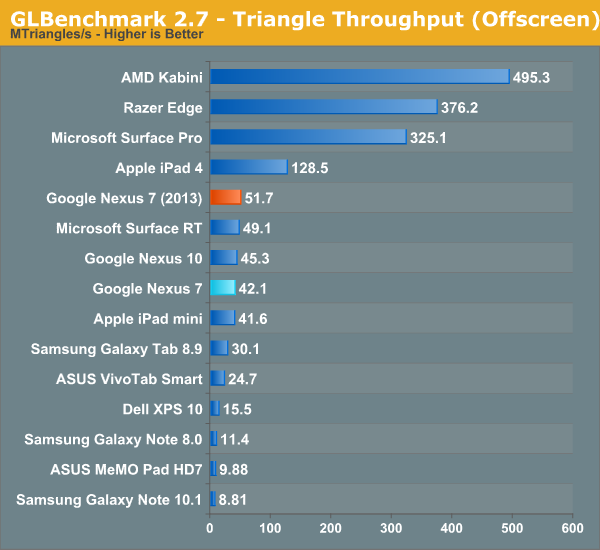
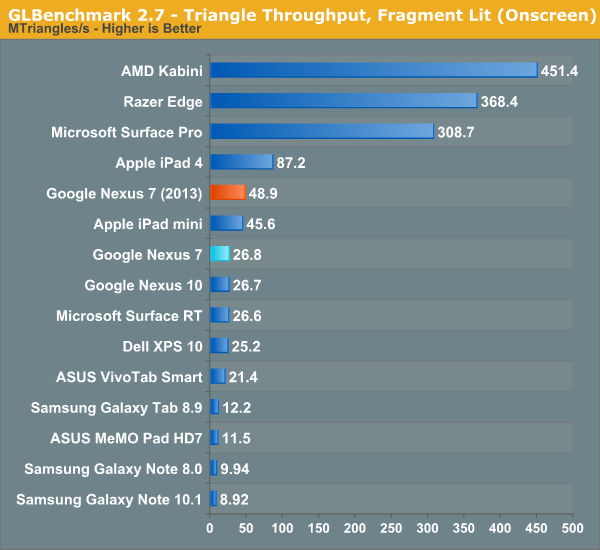
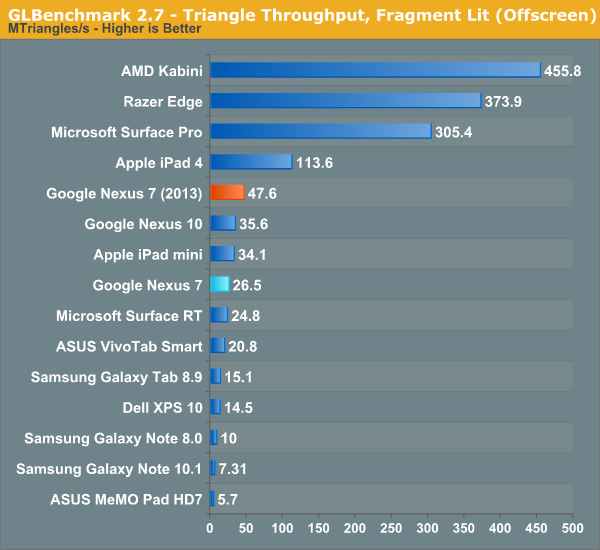
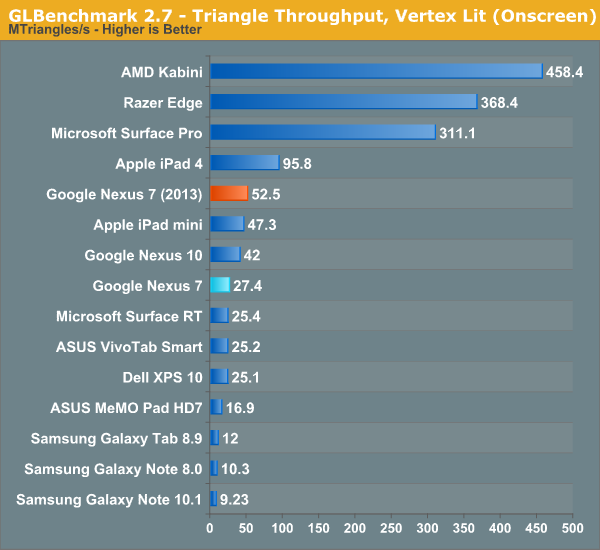
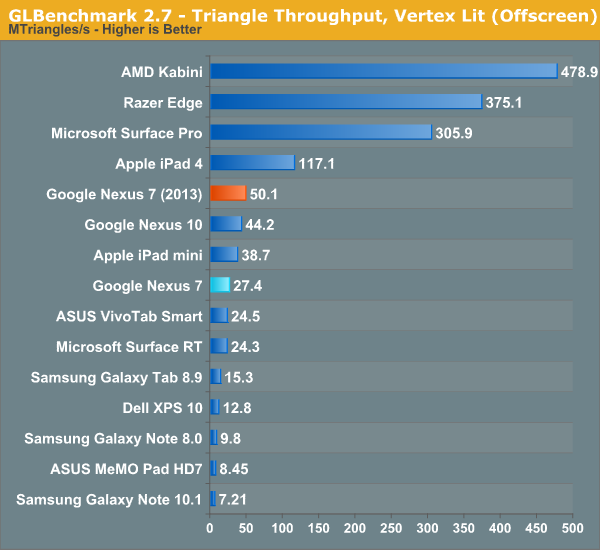

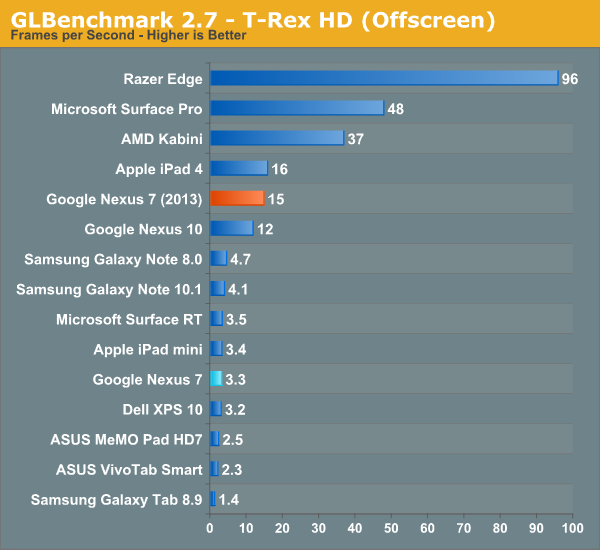
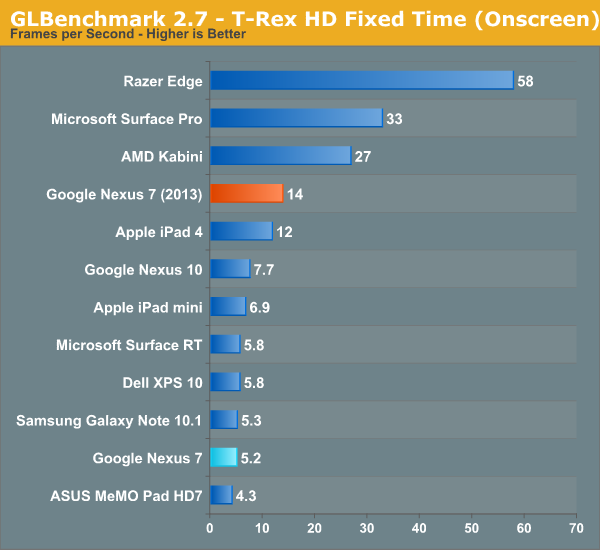
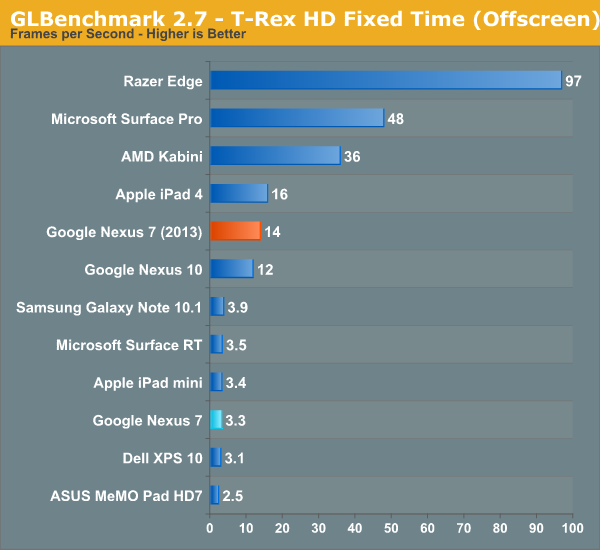
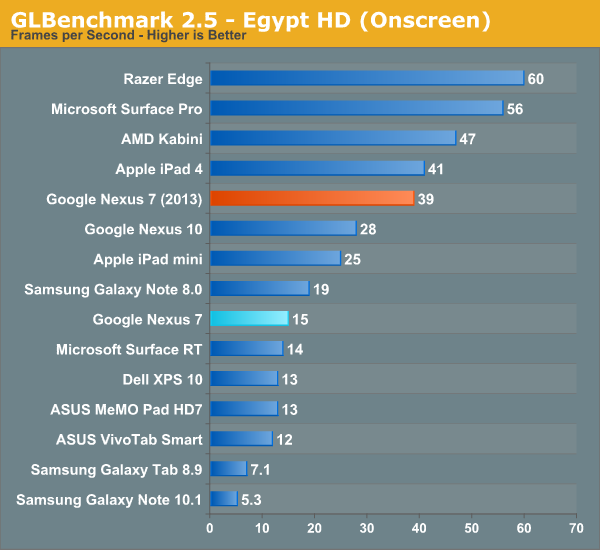
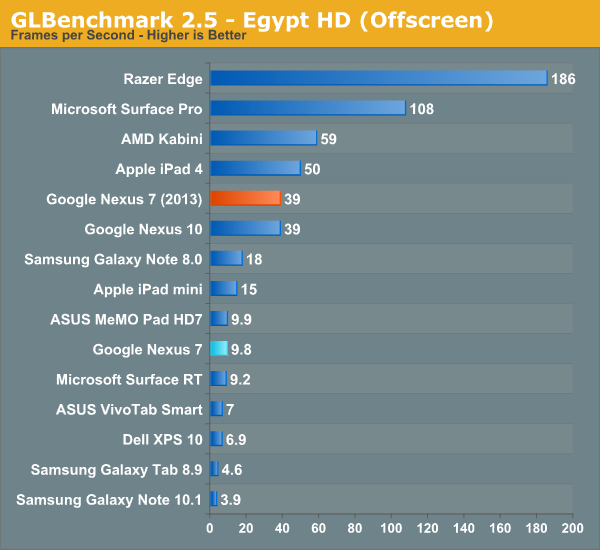
Suffice it to say, moving from 1.2–1.3 GHz Tegra 3 to 1.5 GHz APQ8064 represents a big jump forwards in performance. Google claimed 1.8x improvement on CPU performance, and 4x improvement on GPU, which gets validated pretty much consistently through the benchmarks. I never felt like Tegra 3 was a slouch by any means (performance was more I/O bound on the OG Nexus 7, which we’ll talk about in a moment), but the new Nexus 7 has ample performance for the considerable increase in screen resolution.
Dat eMMC
It wasn’t any secret with the original Nexus 7 that much of the real world performance was gated by storage I/O throughput – we wrote about it after all – and storage performance was a common complaint while multitasking on a few other previous and similar era ASUS tablets. Most of the time performance was acceptable, and for $200 you can’t complain too much about things, the issue was that further on in the life of the tablet performance began degrading somewhat notably, leading to complaints.
Obviously the first thing I did on the Nexus 7 (2013) was run Androbench with the same 100 MB settings to test and see what out of box I/O performance looks like. Things are much better with the new Nexus 7 than they were with the previous one, so at a high level all is good.
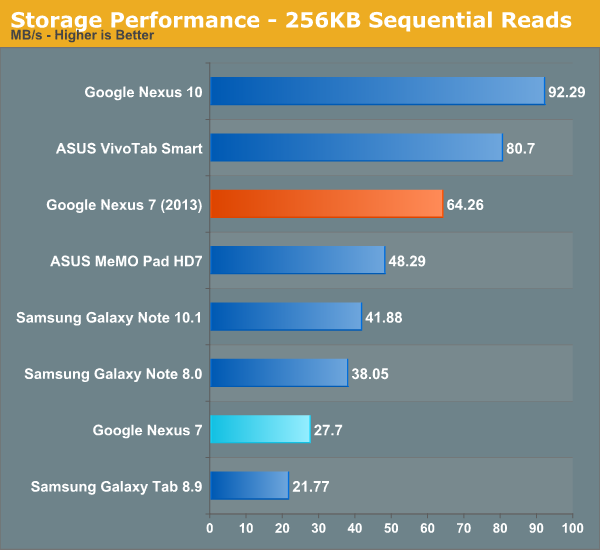
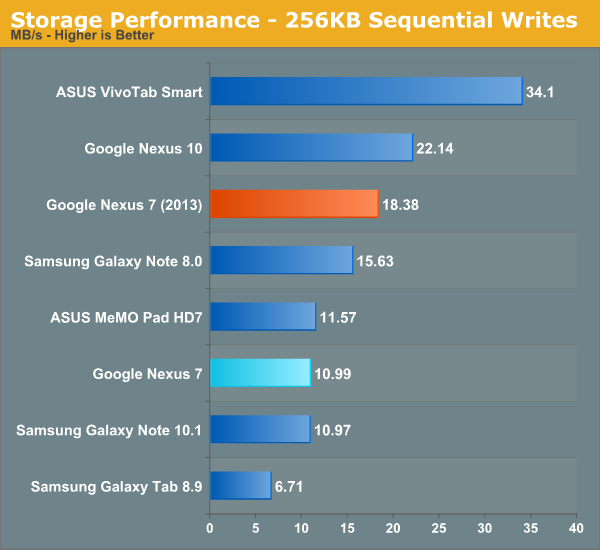
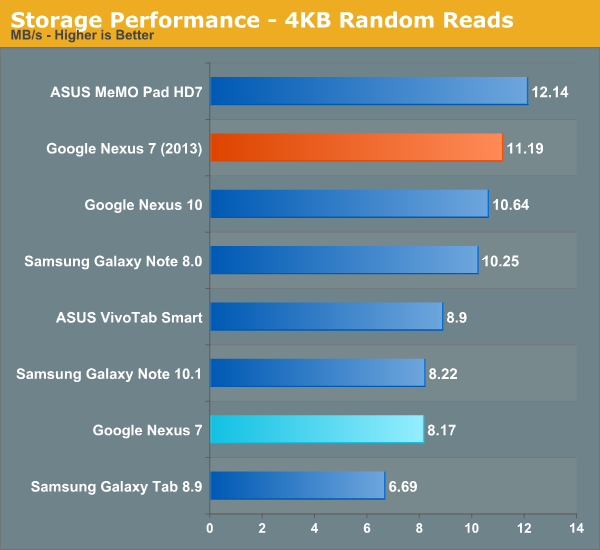

The story actually is a bit more involved however. One of the big problems was that the slowness which occurred with the prior Nexus 7 took device aging to appear – it was great for the first few months, but after you started loading it things tailed off. The new Nexus 7 (2013) with Android 4.3 includes support for fstrim, essentially idle garbage collection, which TRIMs the eMMC when a few conditions are met – the device is idle, screen off, and battery above roughly 70-percent. I’m told that TRIM support has been part of the eMMC standard since around version 4.2, it was just a matter of enabling it in software. The result is that the new Nexus 7 shouldn’t have these aging affects at all. Better yet, fstrim support has also been added to the old Nexus 7 with as of the Android 4.3 update, so if you’ve got a Nexus 7 that feels slow, I/O performance should get better after fstrim runs in the background. I'm checking on whether the other Nexus devices have also had TRIM support added. I would consider the slow storage aging problem fixed as of now, and Google took the eMMC and storage I/O performance issues with the previous Nexus 7 to heart for this version.


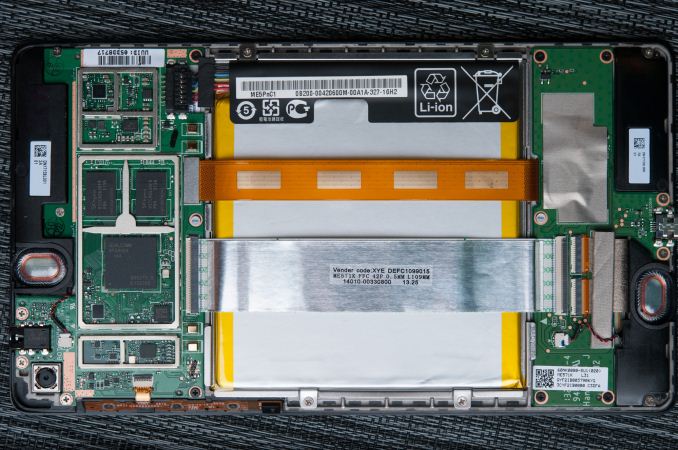
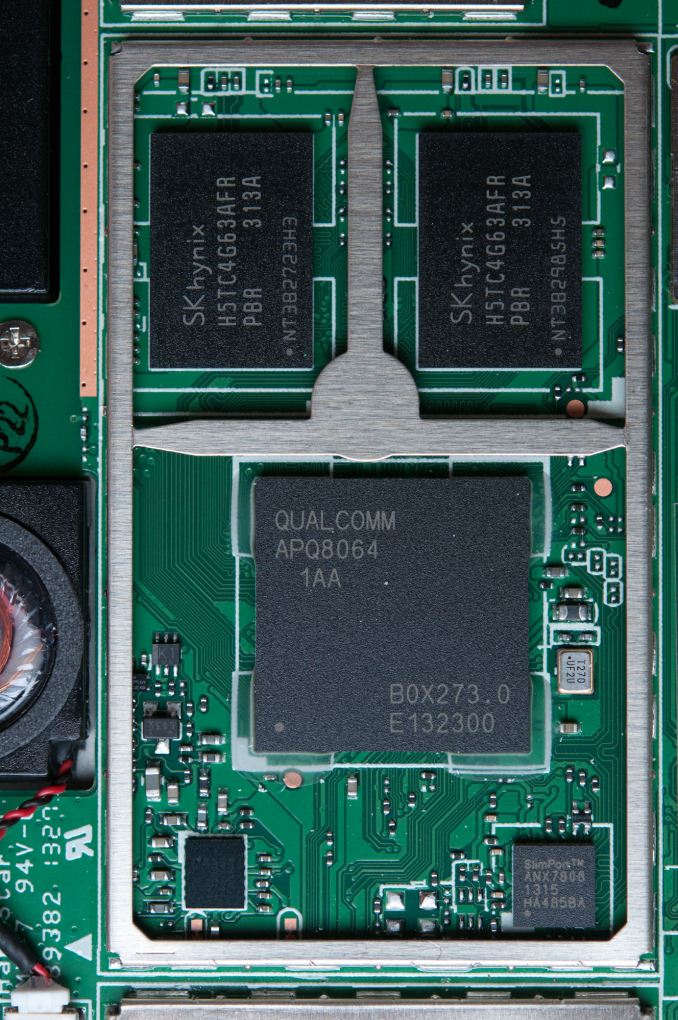














252 Comments
View All Comments
prince2013 - Saturday, July 27, 2013 - link
what is your basis that the LTE model doesn't include a Qualcomm RF360 chip? How else could it work with all US carriers?Brian Klug - Saturday, July 27, 2013 - link
RF360 isn't a chip at all, for some reason I see this all over the place. Rather it's a portfolio of front end components from Qualcomm with a stacked PoP (RF this time) architecture. The core of the RF360 family is a CMOS Power Amplifier and switch, the rest of it is just packaging. For reasons I've discussed, MDM9x15 family doesn't need "RF360" family font ends (of which there's only one compatible, it's primarily going to start with MDM9x25) to do Band 13 and 17 coexistence, just the right discrete PAs and filters, and there's plenty of space for that in a tablet.-Brian
nofumble62 - Saturday, July 27, 2013 - link
I don't see any compelling reason to upgrade my current Nexus 7 though.Dribble - Saturday, July 27, 2013 - link
Current N7 is still working fine, will skip thing gen and get V3 next year.easp - Saturday, July 27, 2013 - link
Is there a discussion of battery life I missed, or is that not relevant for mobile devices any more?Death666Angel - Saturday, July 27, 2013 - link
You've missed the headline, where it says "mini". He didn't have time to do the battery life tests, which take up most of such a review, as a single charge takes 2 to 4 hours and discharging them takes 5 to 10 hours most of the time.Brian Klug - Saturday, July 27, 2013 - link
Battery life testing is ongoing at present, Anand is running those as I write this.-Brian
EnzoFX - Saturday, July 27, 2013 - link
This may have been brought out by the tests, but is the display panel wide gamut? Or at least as much as the iPad 3/4 are?Vigneshj - Saturday, July 27, 2013 - link
//dismayed why more OEMs don’t use the full encode capabilities of APQ8064 (20 Mbps H.264 High Profile) but that’s what it is by default on the new Nexus 7//Can any third party android app helps to overcome this?
Brian Klug - Saturday, July 27, 2013 - link
Yeah or editing build.prop after you've rooted it to change settings.-Brian